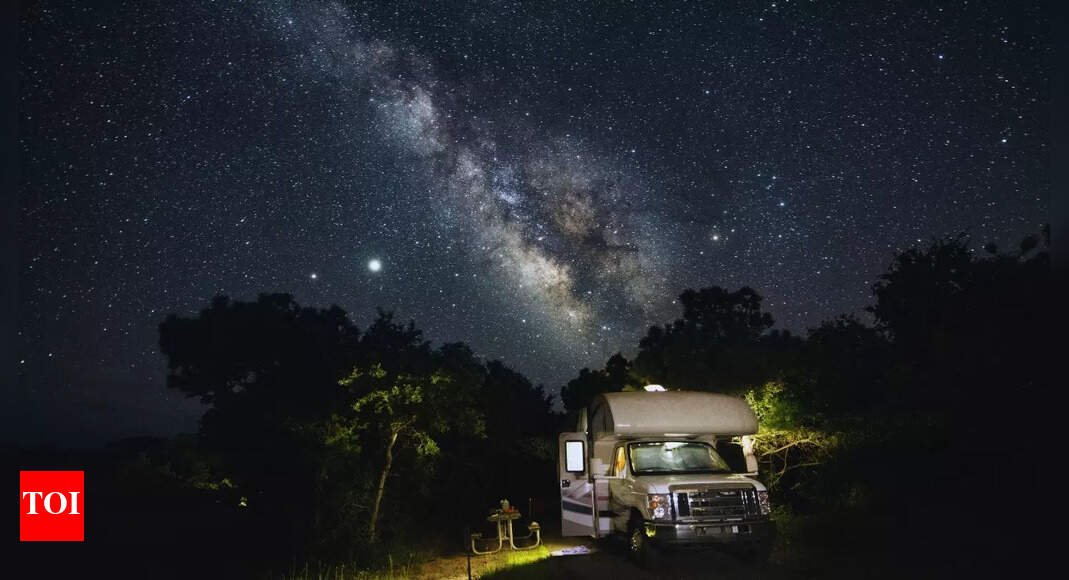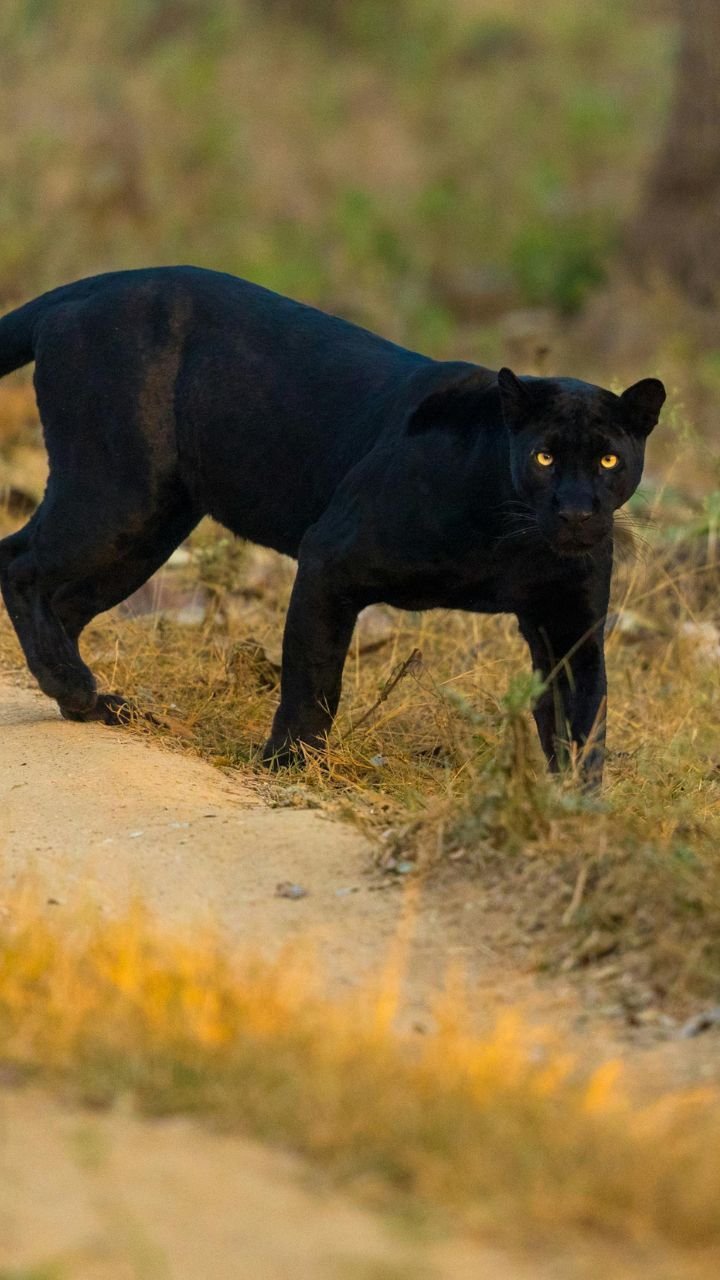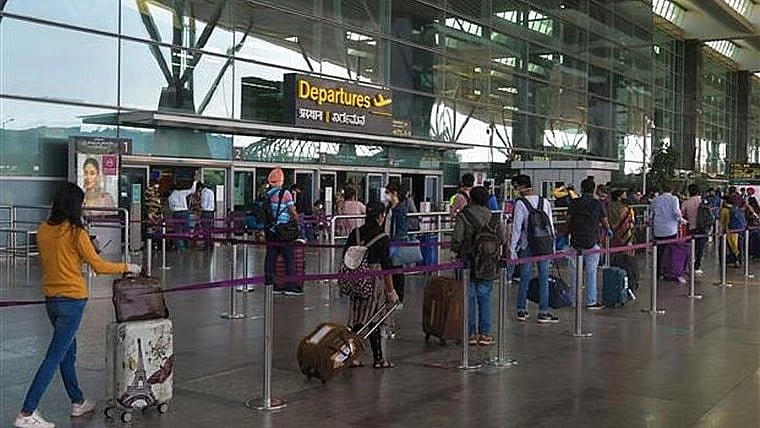Travel Guides & Articles
What to know about Trump’s new travel ban

President Donald Trump has banned travel to the U.S. by citizens of 12 countries and restricted access for those from seven others, citing national security concerns in resurrecting and expanding a hallmark policy from his first term that will mostly affect people from Africa and the Middle East.
The ban announced applies to citizens of Afghanistan, Myanmar, Chad, the Republic of Congo, Equatorial Guinea, Eritrea, Haiti, Iran, Libya, Somalia, Sudan and Yemen. The heightened restrictions apply to people from Burundi, Cuba, Laos, Sierra Leone, Togo, Turkmenistan and Venezuela who are outside the U.S. and don’t hold a valid visa.
The policy took effect Monday and does not have an end date.
Here’s what to know about the new rules:
How Trump justified the ban
Since returning to the White House, Trump has launched a campaign of immigration enforcement that has pushed the limits of executive power and clashed with federal judges trying to restrain him.
The travel ban stems from a Jan. 20 executive order Trump issued requiring the Department of State, Department of Homeland Security and the Director of National Intelligence to compile a report on “hostile attitudes” toward the U.S.
The aim is to “protect its citizens from aliens who intend to commit terrorist attacks, threaten our national security, espouse hateful ideology, or otherwise exploit the immigration laws for malevolent purposes,” the administration said.
In a video posted on social media, Trump tied the new ban to a terrorist attack Sunday in Boulder, Colorado, saying it underscored the dangers posed by some visitors who overstay visas. The man charged in the attack is from Egypt, a country that is not on Trump’s restricted list. U.S. officials say he overstayed a tourist visa.
Who is exempt from the ban
2. Dual citizens, including U.S. citizens who also have citizenship of one of the banned countries
3. Some athletes: athletes and their coaches traveling to the U.S. for the World Cup, Olympics or other major sporting event as determined by the U.S. secretary of state
4. Afghans who worked for the U.S. government or its allies in Afghanistan and are holders of Afghan special immigrant visas
5. Iranians belonging to an ethnic or religious minority who are fleeing prosecution
6. Certain foreign national employees of the U.S. government who have served abroad for at least 15 years, and their spouses and children
7. People who were granted asylum or admitted to the U.S. as refugees before the ban took effect
8. People with U.S. family members who apply for visas in connection to their spouses, children or parents
9. Diplomats and foreign government officials on official visits
10. Those traveling to U.N. headquarters in New York solely on official U.N. business
11. Representatives of international organizations and NATO on official visits in the U.S.
12. Children adopted by U.S. citizens
Which countries are affected
Trump said nationals of countries included in the ban pose “terrorism-related” and “public-safety” risks, as well as risks of overstaying their visas. He also said some of these countries had “deficient” screening and vetting or have historically refused to take back their citizens.
His findings rely extensively on an annual Homeland Security report about tourists, businesspeople and students who overstay U.S. visas and arrive by air or sea, singling out countries with high percentages of nationals who remain after their visas expired.
“We don’t want them,” Trump said.
The inclusion of Afghanistan angered some supporters who have worked to resettle its people. The ban makes exceptions for Afghans on special immigrant visas, who were generally the people who worked most closely with the U.S. government during the two-decade war there.
The list can be changed, the administration said in a document, if authorities in the designated countries make “material improvements” to their own rules and procedures. New countries can be added “as threats emerge around the world.”
State Department guidance
The State Department instructed U.S. embassies and consulates on Friday not to revoke visas previously issued to people from the 12 countries listed in the ban.
In a cable sent to all U.S. diplomatic missions, the department said “no action should be taken for issued visas which have already left the consular section” and that “no visas issued prior to the effective date should be revoked pursuant to this proclamation.”
However, visa applicants from affected countries whose applications have been approved but have not yet received their visas will be denied, according to the cable, which was signed by Secretary of State Marco Rubio.
And, unless an applicant meets narrow criteria for an exemption to the ban, his or her application will be rejected starting on Monday.
How the ban differs from 2017’s
Early in Trump’s first term, he issued an executive order banning travel to the U.S. by citizens of seven predominantly Muslim countries, including Iraq, Syria, Iran, Sudan, Libya, Somalia and Yemen.
It was one of the most chaotic and confusing moments of his young presidency. Travelers from those nations were either barred from getting on flights to the U.S. or detained at U.S. airports after they landed. They included students and faculty, as well as businesspeople, tourists and people visiting friends and family.
The order, often referred to as the “Muslim ban” or the “travel ban,” was retooled amid legal challenges until a version was upheld by the Supreme Court in 2018.
That ban affected various categories of travelers and immigrants from Iran, Somalia, Yemen, Syria and Libya, plus North Koreans and some Venezuelan government officials and their families.
Reactions to Trump’s order
Venezuela President Nicolás Maduro’s government condemned the travel ban, characterizing it in a statement as a “stigmatization and criminalization campaign” against Venezuelans.
Chad President Mahamat Deby Itno said his country would suspend visas for U.S. citizens in response to the ban.
Aid and refugee resettlement groups also denounced it.
“This policy is not about national security — it is about sowing division and vilifying communities that are seeking safety and opportunity in the United States,” said Abby Maxman, president of Oxfam America.
But reactions to the ban ran the gamut from anger to guarded relief and support.
In Haiti, radio stations received a flurry of calls Thursday from angry listeners, including many who said they were Haitians living in the U.S. and who accused Trump of being racist, noting that the people of many of the targeted countries are Black.
Haitian-American Elvanise Louis-Juste, who was at the airport Sunday in Newark, New Jersey, awaiting a flight to her home state of Florida, said many Haitians wanting to come to the U.S. are simply seeking to escape violence and unrest in their country.
“I have family in Haiti, so it’s pretty upsetting to see and hear,” Louis-Juste, 23, said of the travel ban. “I don’t think it’s a good thing. I think it’s very upsetting.”
William Lopez, a 75-year-old property investor who arrived from Cuba in 1967, supports the travel ban.
“These are people that come but don’t want to work, they support the Cuban government, they support communism,” Lopez said at a restaurant near Little Havana in Miami. “What the Trump administration is doing is perfectly good.”
___
Associated Press reporters Evens Sanon in Port-au-Prince, Haiti, and Dánica Coto in San Juan, Puerto Rico, Regina Garcia Cano in Caracas, Venezuela, Steve Karnowski in Minneapolis and Gisela Salomon in Miami contributed.
Travel Guides & Articles
Beyond wildlife: India’s best nature trips to plan before 2025 ends |

The wildlife season is just around the corner, and we are excited about that. But this time, we are not here for that. For nature lovers, India’s diverse landscapes do not disappoint. Here we are looking at experiences beyond wildlife safaris, from lush valleys to serene backwaters. The winter months will provide perfect weather for exploring the outdoors. Here are eight exceptional nature trips across India to plan before the year ends.
Mawlynnong, Meghalaya
From Shillong Airport, Mawlynnong is located just 90 km. Also known as Asia’s cleanest village, Mawlynnong’s forests, waterfalls, and living root bridges are some of the best things you will experience in Northeast India. Not to forget, winter is the time when Dawki River (located just 30 km from Mawlynnong) is at it’s best form. Crystal clear water of Dawki River will leave you mesmerised. When in Mawlynnong, stay in village guesthouses. They are budget-friendly, and will let you have authentic traditional stay experience.
Dandeli, Karnataka
Located just 125 km from Goa Airport, Dandeli is nestled in the Western Ghats’ foothills. Its dense forests and Kali River offer adventure and serenity. Its flat terrain and riverine landscape are photogenic, perfect for the ‘gram.’ If you can, take out time to go rafting on the Kali River, or trek to Kavala Caves.Bhitarkanika National Park, OdishaLocated just 150 km from Bhubaneswar Airport, this mangrove ecosystem and wetland, spans 672 sq km. It offers serene boat rides through creeks and sightings of crocodiles and migratory birds. Bhitarkanika is a beautiful mix of wildlife and offbeat travel. Cruise through mangroves, spot estuarine crocodiles, or visit the Olive Ridley turtle nesting site at Gahirmatha.Gokarna, KarnatakaGokarna is located approximately 150 km from Goa Airport. It’s a quieter alternative to Goa. Gokarna’s pristine beaches and coastal cliffs offer a laid-back nature escape, far from the hustle and bustle of an over-crowded (and expensive) tourist trap. Here’s what to do in Gokarna: Relax on Om Beach, trek to Kudle Beach, or visit Half Moon Beach for solitude. The Mahabaleshwar Temple is a beautiful addition to your serene coastal holiday.
Travel Guides & Articles
Top 6 Places To Spot Black Panthers In India – Travel and Leisure Asia

Top 6 Places To Spot Black Panthers In India Travel and Leisure Asia
Source link
Travel Guides & Articles
Travel Drops 8% In June 2025

New Delhi: For the first time since 2001, excluding the Covid-19 years, the number of Indians visiting the United States has fallen as 2.1 lakh Indians travelled there in June 2025, which is an 8 per cent drop compared to 2.3 lakh in the same month last year, according to the US Commerce Department’s National Travel and Tourism Office (NTTO).
The downward trend seems to be continuing in July as well, with provisional data showing a 5.5 per cent decline compared to July 2024.
This slowdown is part of a broader global trend. NTTO data shows that overall international arrivals to the US also fell, with a 6.2 per cent drop in June, 7 per cent in May, 8 per cent in March, and 1.9 per cent in February.
Only January and April saw increases of 4.7 per cent and 1.3 per cent, respectively.
India continues to be the fourth largest source of international visitors to the US. Since Canada and Mexico share land borders with America, India ranks as the second largest overseas market after the UK, followed by Brazil in fifth place.
Together, these five countries contributed nearly 60 per cent of all international arrivals to the US in June.
Traditionally, Indian travellers to the US include students, business professionals, and those visiting friends and relatives.
Leisure travel to America has always been less popular compared to destinations like Southeast Asia, the Middle East, and Europe.
The current slowdown is being seen most clearly among students, though experts believe that business and family visits could also be affected if visa delays and constraints continue.
The Indian diaspora in the US is strong, with over 50 lakh people, which has generally ensured a steady flow of travel.
In fact, NTTO data shows that every June since 2001 had recorded higher numbers than the year before — until now.
April this year had been a positive month for Indian travellers overall, with 29 lakh people flying abroad.
The UAE was the top destination, followed by Saudi Arabia, Thailand, Singapore, and the US.
(Except for the headline, this article has not been edited by FPJ’s editorial team and is auto-generated from an agency feed.)
-
Tools & Platforms3 weeks ago
Building Trust in Military AI Starts with Opening the Black Box – War on the Rocks
-

 Business2 days ago
Business2 days agoThe Guardian view on Trump and the Fed: independence is no substitute for accountability | Editorial
-

 Ethics & Policy1 month ago
Ethics & Policy1 month agoSDAIA Supports Saudi Arabia’s Leadership in Shaping Global AI Ethics, Policy, and Research – وكالة الأنباء السعودية
-

 Events & Conferences3 months ago
Events & Conferences3 months agoJourney to 1000 models: Scaling Instagram’s recommendation system
-

 Jobs & Careers2 months ago
Jobs & Careers2 months agoMumbai-based Perplexity Alternative Has 60k+ Users Without Funding
-

 Funding & Business2 months ago
Funding & Business2 months agoKayak and Expedia race to build AI travel agents that turn social posts into itineraries
-

 Education2 months ago
Education2 months agoVEX Robotics launches AI-powered classroom robotics system
-

 Podcasts & Talks2 months ago
Podcasts & Talks2 months agoHappy 4th of July! 🎆 Made with Veo 3 in Gemini
-

 Podcasts & Talks2 months ago
Podcasts & Talks2 months agoOpenAI 🤝 @teamganassi
-

 Mergers & Acquisitions2 months ago
Mergers & Acquisitions2 months agoDonald Trump suggests US government review subsidies to Elon Musk’s companies





















